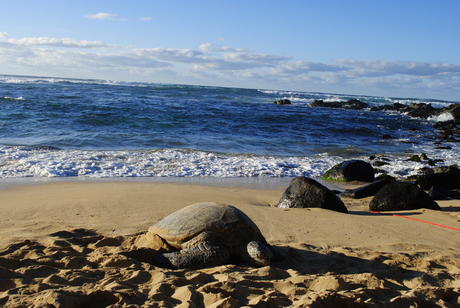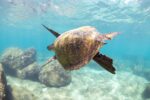There are 64 animals and 338 plants that live in Hawaii and have been identified as endangered species[1]. The animals listed below are referenced from an environmental NGO called Center for Biological Diversity.[2] Although this is just a small fraction of the numerous animals which are endangered, I’d like to use these well known species as examples.
Nene (Hawaiian Goose)
At one point, there were confirmed to be 20,000 Nene on the Hawaiian islands. However, due to hunting, destruction of habitats and falling prey to natural predators, by 1918 the number drastically declined to 30. Since then, thanks to breeding programs, controlling of natural enemies, and protection of natural habitats, the Nene population increased to 400 by 1980 and by 2003 the population was at 1, 275.
Honu (Green sea turtle)
The Honu is listed as a threatened species under federal and state law. Honu live in the tropical and semi-tropical climate and can be found predominantly in the Atlantic Ocean and Pacific Ocean. However, due to over hunting and destruction of natural habitat, the number of Honu has declined. In Hawaii, over 90% of the Honu have built their nest in the French Frigate Shoals (the largest atoll in the Northwestern Hawaiian Islands). Since protection of Honu began in 1978, the nesting female population within the atoll increased from 75 in 1973 to 470 in 2003. Although disease has been of concern, habitat loss due to development and expanding tourism remains to be the largest threat.
Koholā(Humpback whale)
There were estimated to be 200,000 Kohalā in the world until commercial hunting in the early 1900s decimated the species. The International Whaling Commission banned hunting in 1966 but by then, the population had declined to 1,000. Since protection began, the Kohalā population has increased and in 1992 there were estimated to be 6,000 to 8,000.
These animals are often seen among the Hawaiian Islands and are an integral part of the nature. Surrounded by the Pacific Ocean, there is a limited amount of land in the Hawaiian Islands and we must use this land harmoniously with animals and plants. In order to lead a healthy life abundant with nature, it is necessary for us to consider how plants and animals can live safely as well.
Resources:

